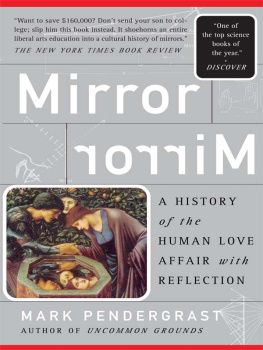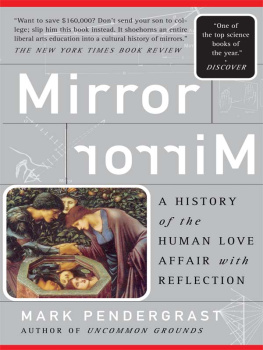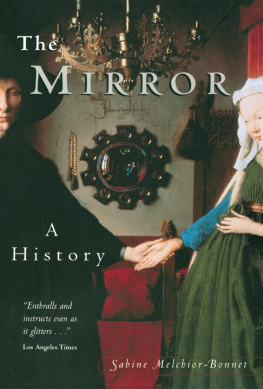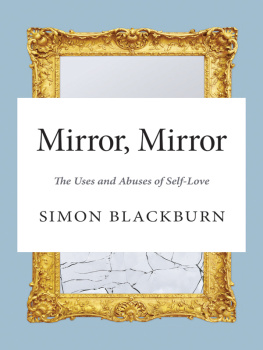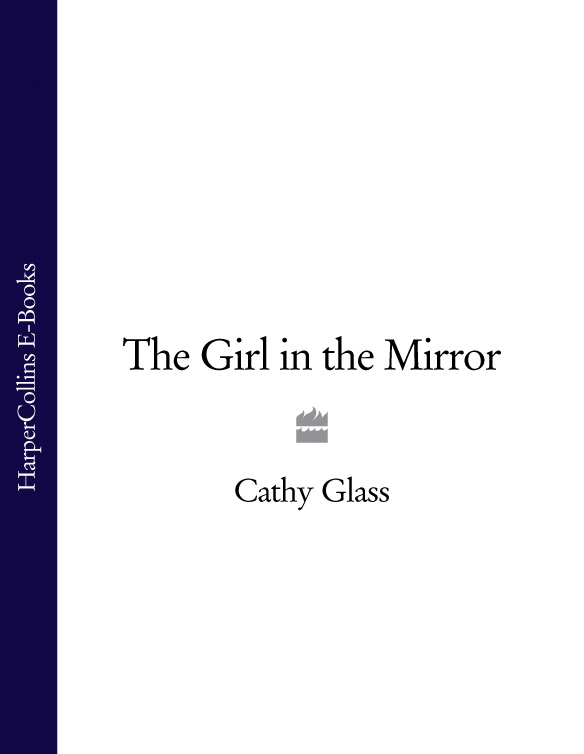The world is full of fools, and he who would not see it should live alone and smash his mirror.
Strange, that there are dreams, that there are mirrors. Strange that the ordinary, worn-out ways of every day encompass the imagined and endless universe woven by reflections.
They gave us things like solid water, which were sometimes brilliant as the sun and which sometimes showed us our own faces. We thought them the children of the Great Spirit.
August 1805, upon receiving mirrors from the Lewis and Clark expedition.
Mirrors symbolize reality, the sun, the earth, and its four corners, its surface, its depths, and all of its peoples.
INTRODUCTION
Every morning there you are again. Its a ritual that humans perform daily, something so commonplace that we hardly notice it. Perhaps youre a little bleary-eyed, but thats you in the mirror, all right, maybe with a toothbrush in your mouth or a washcloth in your hand, trying to reorient yourself for another round in lifes everyday affairs. Like most people, youve become so accustomed to this morning routine that you rarely think about it. Yet its almost unique in the animal kingdom, because the ability to recognize the creature in the mirror as you seems to be limited to the higher primates and, perhaps, dolphins and elephants. Other animals see only a rival or a friend.
Mirrors are meaningless until someone looks into them. Thus, a history of the mirror is really the history of looking, and what we perceive in these magical surfaces can tell us a great deal about ourselveswhence we have come, what we imagine, how we think, and what we yearn for. The mirror appears throughout the human drama as a means of self-knowledge or self-delusion. We have used the reflective surface both to reveal and to hide reality, and mirrors have found their way into religion, folklore, literature, art, magic, and science.
Humans have been intrigued with mirrors since prehistoric times. The ancientsEgyptians, Indians, Chinese, Mayans, Incas, and Aztecsburied their dead with magical metal or stone reflectors, to hold the soul, ward off evil spirits, or allow the body, before taking the final trip to the afterlife, to check its hair.
Because a round mirror can both reflect the sun and become a miniature imitation of it, early metal reflectors came to be associated with sun gods. At the same time, however, mirrors as secular objects were used to apply cosmetics, foreshadowing thousands of years of people peering into the flattering glass.
Yet the magic of mirrors remained. Scryers (gazers into reflective surfaces) in the Middle Ages used them to look into the mystic future; in this way, mirrors served as a portal to the divine or demonic. Magicians manipulated them to create illusions to impress kings and commoners.
And from the earliest times, mirrors have also been used for scientific applications. According to legend, Archimedes used mirrors to set fire to Roman ships during the siege of Syracuse, and the controversy over whether or not this feat was possible led eventually to modern solar ovens and generators. Concave mirrors made early lighthouses possible, and the reflecting telescope changed our view of the universe. Today, huge mirrors permit us to peer back through time billions of yearsinto the most distant regions of spaceand lightweight gossamer optics will allow us to look even farther. Some envision using giant, orbiting mirrors to manage the earths climate.
Thus, the story of mirrors is also the story of light, that mysterious medium that acts simultaneously like a wave and a particle, imposes a speed limit on the universe, and in a sense is the universe, at least according to Albert Einstein. Yet no one really knows what light is. As if these mysteries were not enough, visible light is only one octave in the spectrum that ranges from mile-long radio waves to high-energy bursts of gamma rays. After World War II, our ability to explore the universe dramatically expanded as scientists figured out how to make unusual mirrors to reflect most of those wavelengths. That story, too, is part of the mirror saga.
The glass mirror industry, since its inception in the Middle Ages as a secret Italian guild, followed by the seventeenth-century French industrial espionage that broke the monopoly, has grown to huge proportions. The common glass mirror also had an unforeseen and revolutionary impact on Renaissance literature and art, rendering them more realistic, secular, and sexy.
With the advent of cheap industrialized glass and modern methods of applying reflective material to it, mirrors have become common objects even in the poorest homes. They have been used creatively by architects and home decorators, and in the twentieth century glittering mirrors helped transform the United States into a pleasure-seeking, vain, celebrity-driven society. Psychologists, advertising men, police, and voyeurs peer at us through one-way mirrors. Now more than ever, mirrors are ubiquitous reminders that the study of mankind is man and woman.
Mirrors ushered in the earliest human civilizations, and now they point us into the futurewhile simultaneously allowing astronomers to peer ever farther back into time. The history of mirrors covers a vast territory, from the creation of the universe (perhaps along with alternate mirror universes), to the first hominids, to the Hubble Space Telescope, and beyond. The cast of quirky characters looking into and manipulating mirrors is equally diverse.

